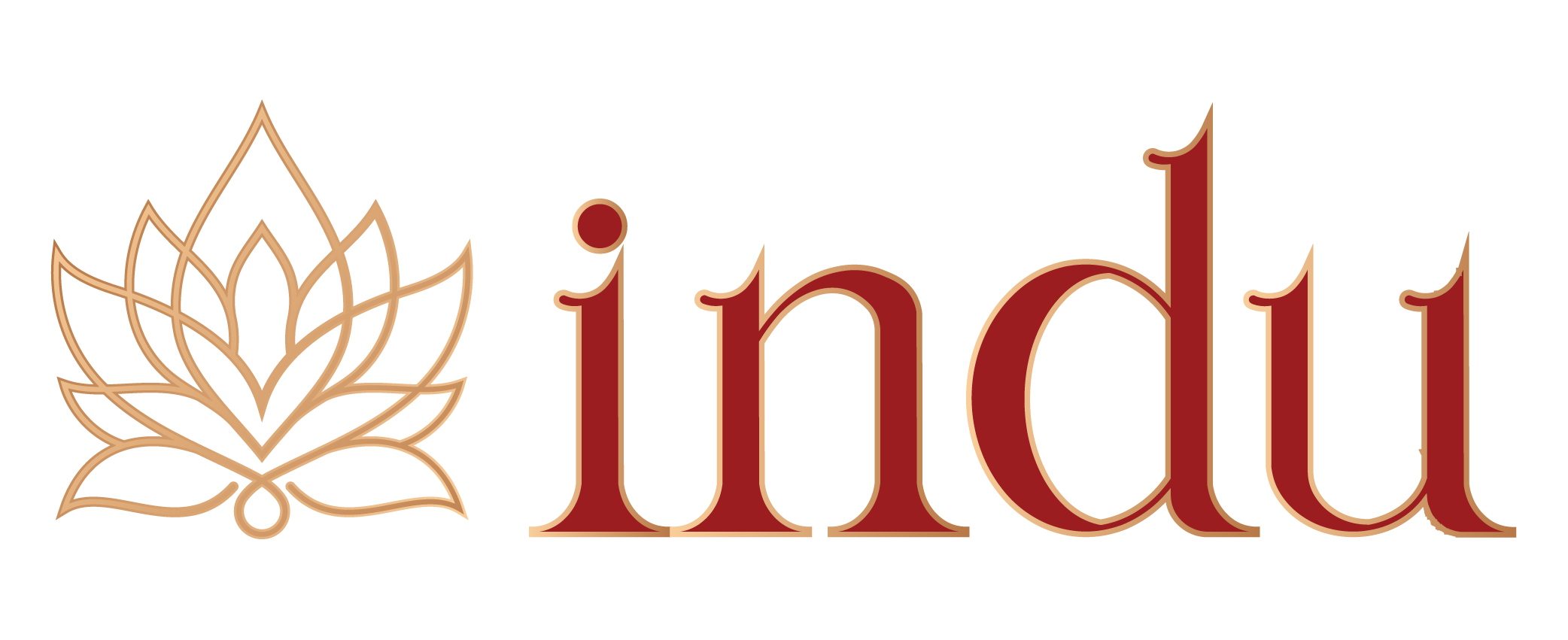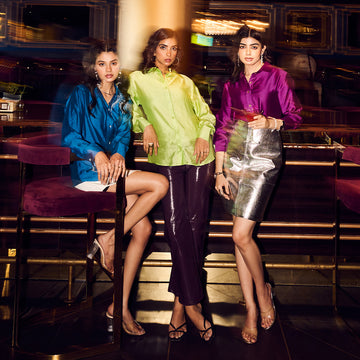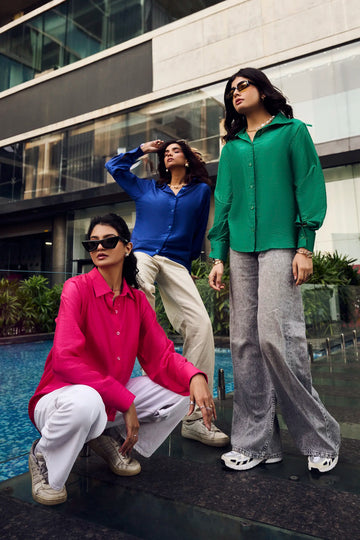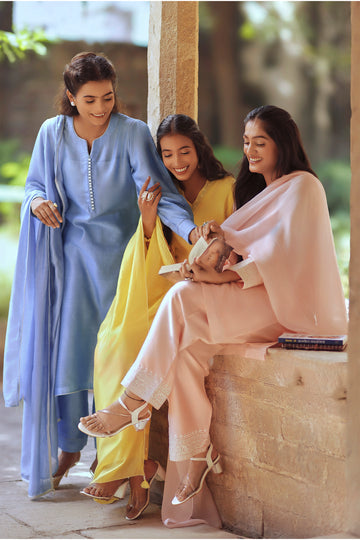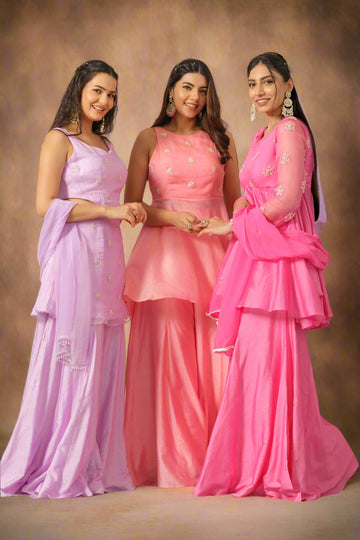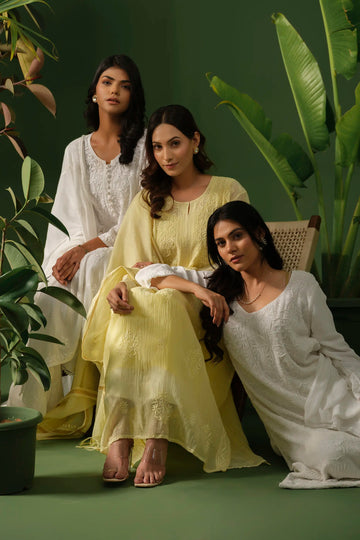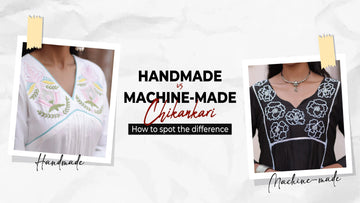Introduction
Chikankari embroidery is an art form that has been cherished for centuries, known for its delicate, intricate, and labor-intensive handwork. However, with the rise of machine-made imitations, distinguishing between authentic handmade Chikankari and mass-produced versions has become increasingly difficult. This guide will help you identify the key differences between the two and ensure that you invest in genuine craftsmanship.
The Essence of Handmade Chikankari
What Makes It Special?
Handmade Chikankari is a labor of love, involving skilled artisans who meticulously embroider each design by hand. The process includes:
-
Drawing the design on fabric using a washable pattern.
-
Hand embroidery using fine threads, often taking days or even weeks to complete.
-
Careful detailing with needle and thread, creating unique imperfections that add to its charm.
Key Identifiers:
-
Irregular Stitches: Each motif has slight variations, as no two handmade pieces are identical.
-
Textured Backside: The reverse side of the embroidery shows knots and threadwork, unlike smooth machine-made versions.
-
Delicate & Intricate Patterns: Handmade pieces often have more refined and detailed embroidery with a soft, flowing finish.
-
Longer Production Time: Takes days or weeks to complete, reflecting artistry and patience.
Understanding Machine-Made Chikankari
What is Machine-Made Chikankari?
With technological advancements, machine embroidery has replicated traditional Chikankari patterns at a fraction of the cost and time. While visually appealing, it lacks the authenticity and depth of hand embroidery.
Key Identifiers:
-
Uniform Stitches: Machine embroidery is precise and lacks the slight imperfections seen in handmade work.
-
Flat Backside: The backside of machine-made embroidery is often smooth, with no visible knots or loose threads.
-
Faster Production: Manufactured in bulk, completing a piece within hours instead of days.
-
Lower Cost: More affordable due to mechanized production, but lacks the craftsmanship of hand embroidery.
Comparison: Handmade vs. Machine-Made Chikankari
| Feature | Handmade Chikankari | Machine-Made Chikankari |
|---|---|---|
| Stitch Quality | Irregular, unique patterns | Perfectly uniform, lacks individuality |
| Backside Texture | Knots and threadwork visible | Smooth and flat |
| Production Time | Days to weeks | Hours |
| Cost | Higher, due to labor-intensive process | Lower, mass-produced |
| Durability | Long-lasting, improves with age | May lose charm over time |
Why Choose Handmade Chikankari?
-
Authenticity: Supports artisans and preserves heritage craftsmanship.
-
Exclusivity: Each piece is unique, carrying a personal touch.
-
Quality & Longevity: Handmade embroidery ages gracefully, often becoming softer and more beautiful over time.
How to Ensure You’re Buying Authentic Chikankari
-
Check the Stitches: Look for unevenness and variations, a clear sign of hand embroidery.
-
Feel the Fabric: Handmade Chikankari is typically done on pure cotton, georgette, or muslin, whereas machine embroidery is often on synthetic materials.
-
Examine the Backside: Handmade pieces will have knots and minor thread irregularities.
-
Buy from Trusted Sellers: Purchase from reputed handloom stores, artisan collectives, or certified brands.
Conclusion
Handmade Chikankari embodies the artistry and dedication of skilled craftsmen, making it a timeless addition to any wardrobe. While machine-made Chikankari offers affordability and accessibility, nothing compares to the authenticity, craftsmanship, and elegance of a hand-embroidered piece. By learning to distinguish between the two, you can make informed choices and support traditional artisans.
FAQs
-
Is handmade Chikankari more expensive than machine-made?
Yes, due to the time and skill involved, handmade Chikankari is costlier than machine-made versions. -
Can machine-made Chikankari look similar to handmade embroidery?
At first glance, yes. But upon closer inspection, you’ll notice uniform stitches and a smooth backside in machine-made versions. -
Does handmade Chikankari last longer?
Yes, due to its intricate threadwork and quality craftsmanship, it often becomes more beautiful with time. -
Where can I find authentic handmade Chikankari?
Look for handloom-certified stores, artisan fairs, and reputable online marketplaces specializing in handcrafted textiles. -
Why does handmade Chikankari have slight imperfections?
These imperfections are a sign of authenticity, proving that each piece is uniquely hand-embroidered by skilled artisans.

